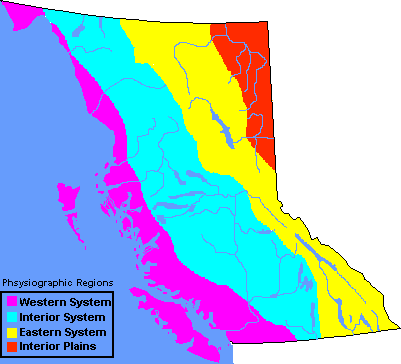"Diverse" or "varied" are perhaps two of the best words available to describe the biophysical character of Canada's third largest province. At 842,677 km2, it stretches from 48 degrees north latitude, to 60 degrees north latitude, and rises from sea level to 4663M at the peak of Fairweather Mountain.

The general "look" of the land, or physiography, includes the majesty of the Rocky Mountains and the subtle rolling prairie of the Peace River district. Geological structures range from lava flows only a few hundred years old on the land between the Skeena and Nass Rivers) to sedimentary fossil beds - the Burgess Shales near Field, B. C. - that are a World Heritage Site. Climate varies from west coast rainforest to semi-arid lands that support scorpions, rattlesnakes and horned toads. Vegetation is equally varied and boasts the widest range of plant species of all of Canada's provinces and territories. These are supported by young and fragile alpine soils in the higher elevations to grassland and forest soils at lower elevations.
Travelling west to east, south to north or upslope will quickly demonstrate the diversity of British Columbia's biophysical space. Even over short distances the terrain, geology, climate, vegetation and fauna often change visibly and dramatically.
© 1996-
INTERACTIVE BROADCASTING CORPORATION